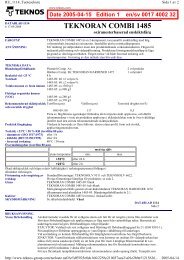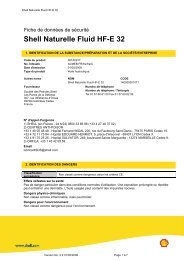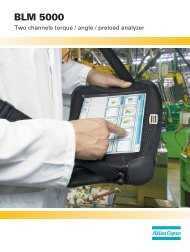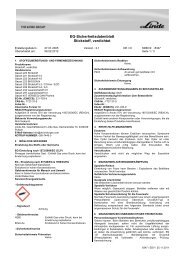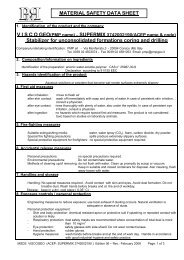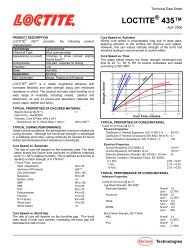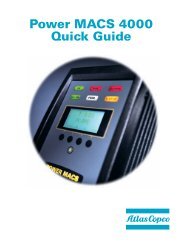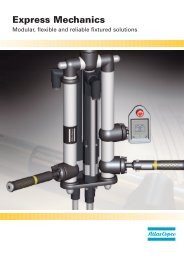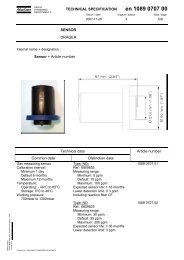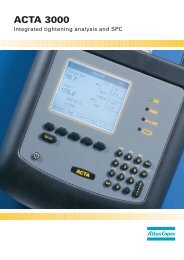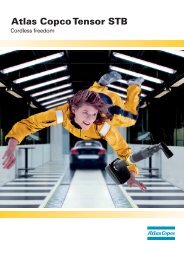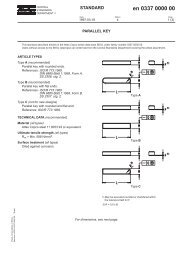Ergonomics - Atlas Copco
Ergonomics - Atlas Copco
Ergonomics - Atlas Copco
Create successful ePaper yourself
Turn your PDF publications into a flip-book with our unique Google optimized e-Paper software.
88<br />
Weight<br />
The weight of a hand-held tool is a typi-<br />
cal external load to which the operator<br />
is subjected. Depending on the working<br />
posture, the weight of the tool applies<br />
different torques to the joints of the<br />
hand-arm-shoulder system. The risk of<br />
a tool causing work-related musculo-<br />
skeletal disorders varies according to the<br />
amplitude of the torques as well as the<br />
duration of the task performed.<br />
In modern industrial situations, many hand-<br />
held tools are electrically or pneumatically<br />
powered in order to reduce the effort<br />
required from the operator.<br />
However, this approach sometimes<br />
results in a heavy tool, especially when stiff,<br />
heavy hoses are used. It is not uncommon to<br />
find hand-held tools weighing more than<br />
5 kg. Even if a tool of this weight is held in<br />
an ergonomically optimal position, it will<br />
still exert a torque on the shoulder joint<br />
equivalent to about 20% of the person’s maxi-<br />
mal force generating capacity (20% MVC) for<br />
a male operator and 30% for a female opera-<br />
tor. The weight-related exposure on opera-<br />
tors is therefore a major ergonomic concern.<br />
Tool weight limit<br />
There are no simple recommendations spec-<br />
ifying tool weight limits for all situations.<br />
As an external load, the weight should be<br />
limited according to the working conditions,<br />
and the frequency, speed and duration of<br />
the operation to be performed. Weight as<br />
a load factor should be added to the other<br />
vertical forces applied to the operator.<br />
As a general rule, if the weight of the<br />
tool has to be borne by the operator during<br />
operation, tools heavier than 2.5 kg should<br />
be suspended, counter-balanced, or have<br />
two handles. For precision operations, tools<br />
weighing more than 0.4 kg are not recom-<br />
mended. For tougher jobs, such as drilling<br />
concrete, heavier tools may be necessary to<br />
help absorb vibrations and supply feed force.



